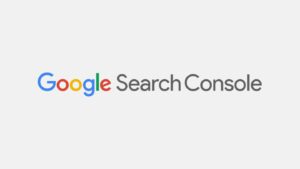SEO and SEM: Difference, Pros, Cons & Combined Strategy

In digital marketing, search engine optimisation (SEO) and search engine marketing (SEM) are two common strategies businesses use to improve their visibility in search engines and attract more potential customers.
While SEO is technically an SEM strategy focused on optimising your website and content to rank higher in search engine results pages (SERPs), SEM generally involves paid advertising on search engines or pay-per-click (PPC) to increase website traffic, generate leads, and boost conversions. Choosing the right strategy for your business is crucial to achieving your desired outcomes. For instance, SEO is the way to go if your goal is to attract more organic traffic to your website. But if you want to promote a specific product or service, SEM may be more effective.
This article will explore the distinctions between SEO and SEM and which strategy is best for your business. It will also consider the pros and cons of each strategy and offer practical examples of effective implementations to understand better which strategy aligns with your business objectives and how to make a well-informed decision.
What is SEO?
Search engine optimisation (SEO) refers to the practice of optimising your website and its content to rank higher in search engine results pages (SERPs) for relevant keywords and phrases. SEO aims to attract more organic traffic to your website, which can lead to more leads, conversions, and revenue.
Here are some key aspects of SEO:
- Keyword research: Identifying relevant keywords and phrases your target audience uses to search for your products or services.
- On-page optimisation: Optimising your website’s content, structure, and HTML to make it more accessible and appealing to search engines.
- Off-page optimisation: Building high-quality backlinks to your website from authoritative sources to improve your website’s authority and reputation.
- Technical SEO: Ensuring that your website is optimised for search engine crawlers, including issues like site speed, mobile-friendliness, and structured data.
Pros and Cons of SEO
| Pros | Cons |
|---|---|
| Long-term benefits: SEO can provide long-lasting benefits for your website’s visibility and traffic. | Time-consuming: SEO requires significant time and effort to produce results. |
| Cost-effective: Compared to other forms of marketing, SEO can be more cost-effective in the long run. | Complexity: SEO can be complex and challenging, especially for beginners. |
| Credibility: A high search ranking can boost your credibility and reputation as a trustworthy source of information or products. | Uncertainty: Search engine algorithms are constantly changing, so it can be difficult to predict SEO outcomes. |
What is SEM?
Search engine marketing (SEM) is a type of online marketing that involves promoting your website by using paid advertising on search engines such as Google, Bing, and Yahoo Search. The goal of SEM is to increase website traffic, generate leads, and boost conversions by placing ads in front of potential customers when they search for specific keywords or phrases related to your business.
SEM is typically implemented through pay-per-click (PPC) advertising involving paid search, where businesses bid on specific keywords or phrases to display their ads at the top of search engine results. Here are some key aspects of SEM:
- Keyword research: Identifying relevant keywords and phrases your target audience uses to search for your products or services.
- Ad creation: Creating compelling ads that attract clicks and drive traffic to your website.
- Bid management: Setting and adjusting your bid amount for specific keywords or phrases to ensure that your ads are displayed to the right audience.
- Performance monitoring: Analysing the performance of your ads and adjusting your strategy accordingly.
Pros and Cons of SEM
| Pros | Cons |
|---|---|
| Immediate results: Unlike SEO, which can take months to produce results, SEM can provide immediate visibility and traffic to your website. | Cost: SEM can be more expensive than other forms of marketing, especially if you’re bidding on highly competitive keywords. |
| Targeted audience: SEM allows you to target specific keywords and phrases to reach a highly relevant audience that is more likely to convert. | Limited shelf life: Once you stop paying for ads, your visibility and traffic will disappear as quickly as they came. |
| Measurable results: SEM provides detailed metrics and data that allow you to track your return on investment (ROI) and adjust your strategy accordingly. | Complexity: Running successful SEM campaigns can be complex and challenging, especially for beginners. |
Differences Between SEO and SEM

While they are both search engine marketing strategies, the key difference between SEO and SEM lies in understanding how search engines work. When queried for a keyword or phrase, a search engine returns two types of search results; organic results and paid results. SEO will help you rank in the organic search results, while SEM will help you feature in the paid search results.
Here are some of the most significant differences between SEO and SEM:
- Cost: SEO is typically more cost-effective than SEM since it focuses on attracting organic traffic rather than paid advertising. However, SEO requires significant time and effort to produce results.
- Time to results: SEO can take several months to produce results, while SEM can provide immediate visibility and traffic to your website.
- Approach: SEO focuses on optimising your website and content to rank higher in search engine results pages, while SEM involves paid advertising on search engines.
- Targeting: SEO targets organic traffic by ranking higher in search engine results for relevant keywords and phrases. SEM targets paid traffic by displaying ads at the top of search results for specific keywords and phrases.
- Shelf life: SEO has a longer shelf life since it focuses on attracting organic traffic that can continue to produce results over time. SEM has a shorter shelf life since it relies on paid advertising that stops as soon as you stop paying for it.
- Metrics: SEO provides metrics such as organic traffic, bounce rate, and time on site. SEM provides metrics such as cost per click (CPC), click-through rate (CTR), and conversion rate.
Combining Both SEO and SEM Strategies
At Adverb.Digital, we have found that combining both SEO and SEM strategies can be highly effective as it can provide a business with a more comprehensive and effective approach to exposure on search engines. Here are some reasons why a business should consider using both SEO and SEM:
- Improved targeting: By using both SEO and SEM, a business can simultaneously target organic and paid traffic for a more comprehensive approach to search engine marketing. SEO can attract organic traffic that may not have been reached through paid advertising, while SEM can target specific audiences that may not have been reached through organic search.
- Increased visibility: Combining SEO and SEM can increase a business’s visibility in search engine results pages (SERPs). A business can increase its visibility and attract more potential customers by ranking highly in organic search results and displaying ads at the top of SERPs.
- Enhanced keyword research: Both SEO and SEM require keyword research, which can be used to inform and improve both strategies. Keyword research can provide insights into which keywords and phrases are most relevant and valuable for a business, allowing them to optimise their organic and paid search efforts.
- Improved performance metrics: By tracking metrics from both SEO and SEM, a business can gain insights into its overall search engine marketing performance and adjust its strategy accordingly. This can help a business continually improve its search engine marketing efforts and achieve its objectives.
- Competitive advantage: Combining SEO and SEM can help a business gain a competitive advantage over other businesses in its industry. A comprehensive search engine marketing strategy can help a business to attract more potential customers, improve its visibility and credibility, and ultimately increase its revenue.
By leveraging the strengths of both strategies and optimising them for specific needs and goals, a business can increase its visibility, attract more potential customers, and achieve its marketing objectives.
Many businesses have successfully implemented combined SEO and SEM strategies to achieve their marketing objectives. For example, HubSpot uses a comprehensive inbound marketing strategy with SEO and SEM to attract and convert leads. It ranks highly in organic search results for marketing-related keywords and uses PPC ads to target specific audiences and promote content.
Choosing The Right Strategy For Your Business
Here are some factors to consider when deciding which strategy is right for your business:
- Business goals: Your business goals should drive your decision between SEO and SEM. If your goal is to attract more organic traffic and improve your website’s visibility in the long term, SEO may be the best approach. If your goal is to generate immediate leads and conversions, SEM may be more effective.
- Budget: Both SEO and SEM require investment, but the cost implication may differ. SEO is typically more cost-effective in the long term since it focuses on organic traffic. SEM can be more expensive in the short term since it involves paid advertising.
- Timeline: SEO takes time to produce results, while SEM can provide immediate visibility and traffic. If you have a longer timeline and can afford to wait for results, SEO may be the best approach. If you need immediate results, SEM may be more effective.
- Target audience: Your target audience should also influence your decision between SEO and SEM. If you want to target a highly specific audience, SEM may be more effective since it allows you to display ads to a targeted audience based on specific keywords and phrases. SEO may be more effective if you want to attract a broader audience.
- Industry competition: Industry competition can also impact your decision between SEO and SEM. If your industry is highly competitive, SEM may be necessary to gain immediate visibility and stand out from the competition. If your industry is less competitive, SEO may be more effective in attracting organic traffic.
Ultimately, the decision between SEO or/and SEM depends on your business goals, budget, timeline, target audience, and industry competition. Here are some steps you can take to choose the right strategy:
- Conduct a thorough analysis of your business goals, budget, and target audience to determine which strategy aligns with your marketing objectives.
- Consider the competitive landscape of your industry and the cost of SEO vs SEM to determine which strategy is most cost-effective and realistic.
- Evaluate your timeline and short-term vs long-term marketing objectives to determine which strategy is most appropriate for your business.
- Experiment with both SEO and SEM to find the right balance that suits your business goals, budget, and timeline.
Never Miss a Thing!
Subscribe to our blog for the latest expert tips and digital marketing resources.





